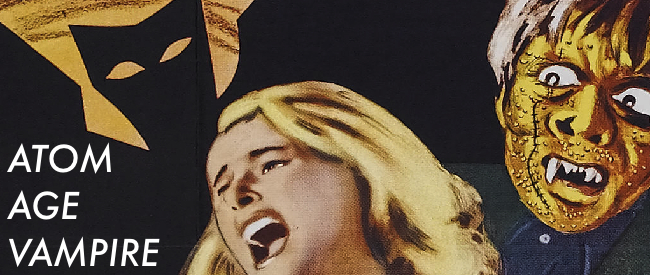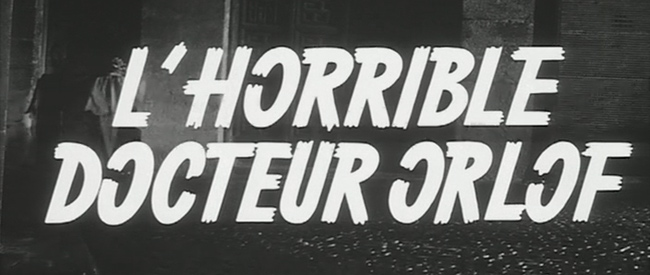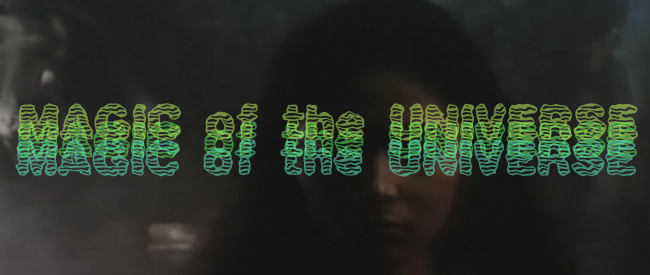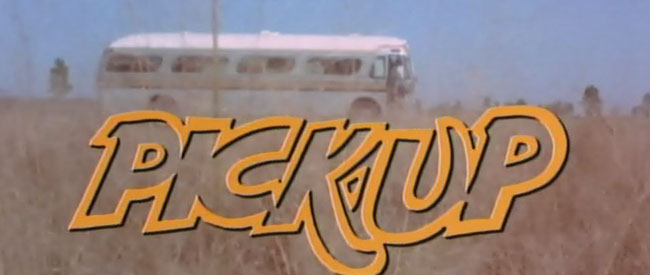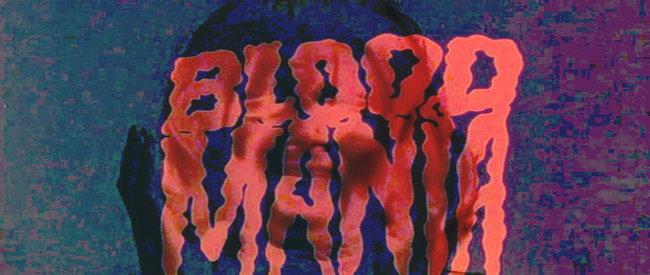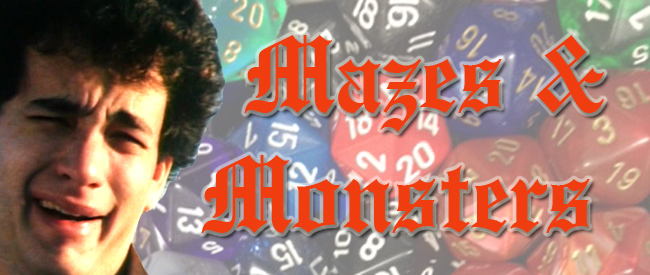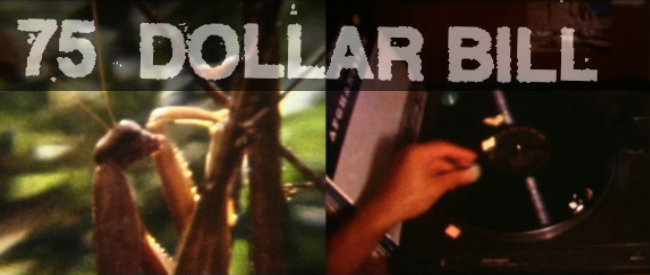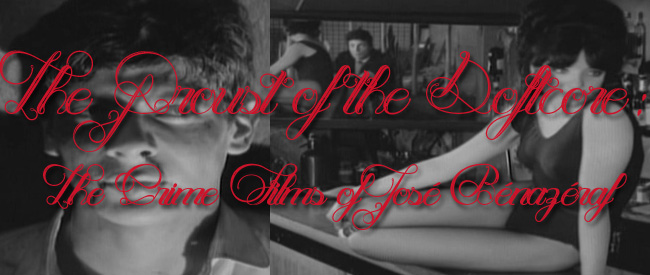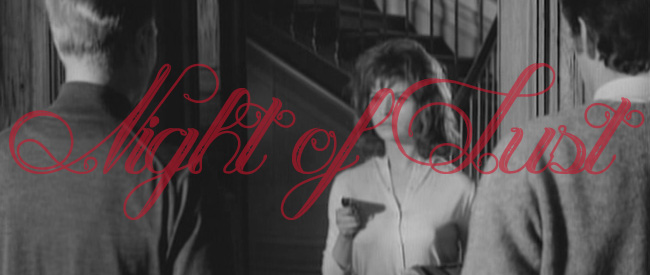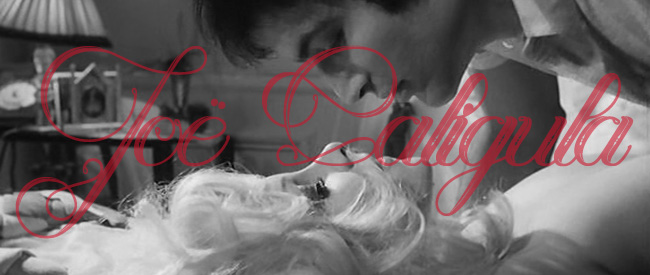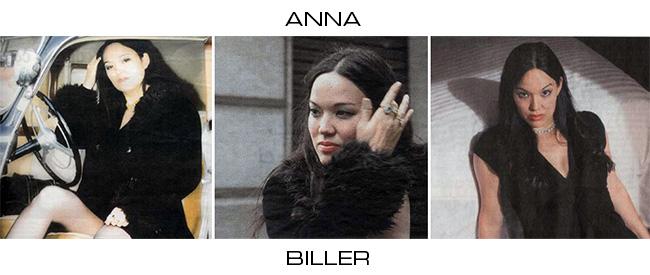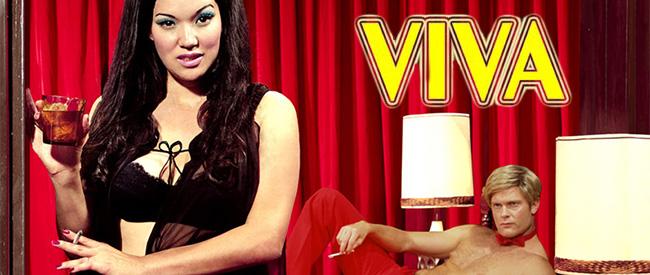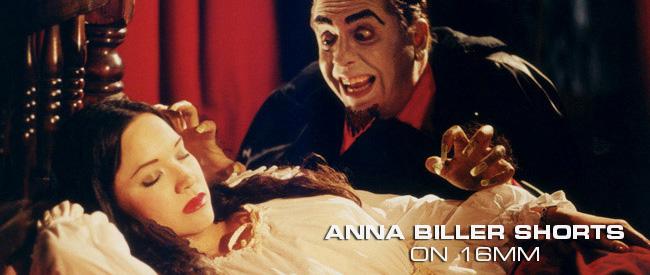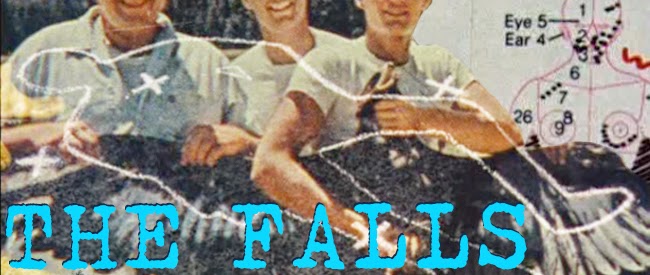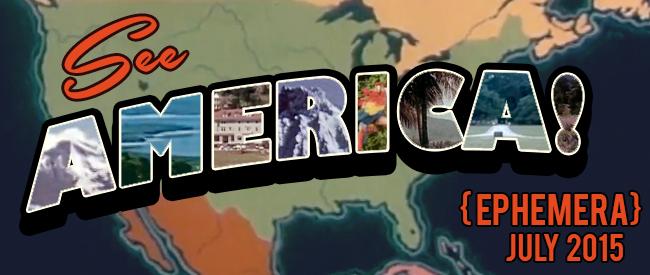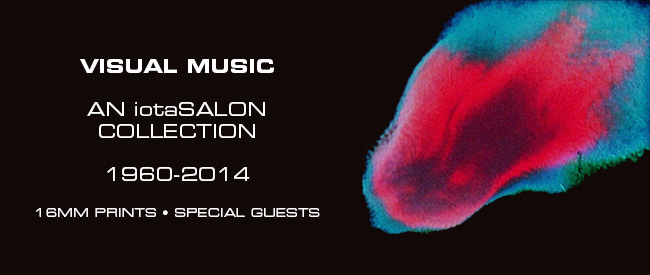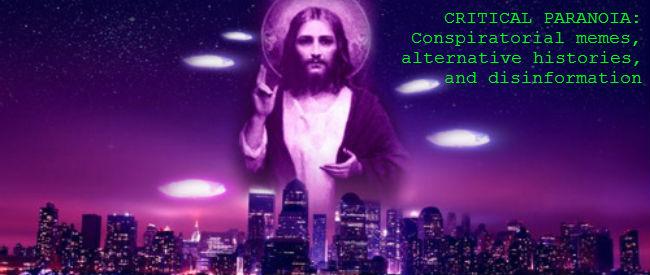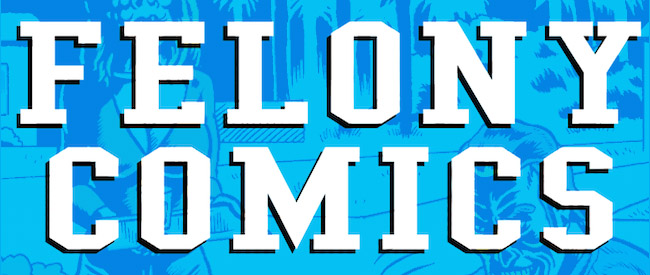FRIDAY, JULY 11: ATOM AGE VAMPIRE
SATURDAY, JULY 12: THE AWFUL DR. ORLOF
FRIDAY, JULY 18: MAGIC OF THE UNIVERSE
SATURDAY, JULY 19: PICK-UP
FRIDAY, JULY 25: BLOOD MANIA
SATURDAY, JULY 26: MAZES & MONSTERS
ATOM AGE VAMPIRE (Seddok, l’erede di Satana)
Dir. Anton Giulio Majano, 1960
Italy, 87 min.
Dubbed in English.
FRIDAY, JULY 11 – MIDNIGHT
When singer Jeanette is horribly disfigured in a car accident, deranged scientist Dr. Levin uses miraculous healing agent Derma 28 to restore her beauty, falling in love with her during the process.
Having previously studied the effects of radiation on living tissue at Hiroshima, Dr. Levin originally developed Derma 25, an imperfect and mutative formula, before refining it to the rejuvenating Derma 28 . As the supply of Derma 28 runs out and Jeanette’s treatment begins to fail, Dr. Levin realizes he must kill to create more. Injecting himself with Derma 25, he mutates into the horrible creature called ‘Seddok’ by the Japanese refugees among whom he culls his victims, gathering glands to keep his obsession beautiful.
ATOM AGE VAMPIRE doesn’t have a literal vampire, but it does feature typical French horror fixations on fading beauty, treatments born of brutality that only temporarily hold aging at bay, and villains pondering the nature of their own evil and the world around them (metaphorical vampires, that is).
THE AWFUL DR. ORLOF (Gritos en la noche)
Dir. Jess Franco, 1962
Spain/France, 90 min.
Dubbed in English.
SATURDAY, JULY 12 – MIDNIGHT
Franco’s eleventh film (of at least 200), and his first proper horror film, demonstrates Franco’s love of traditional mad scientist tropes, mixing a bit of Eyes Without A Face and Frankenstein into one of the undisputed peaks of Franco’s career.
Howard Vernon is at his best as Dr. Orlof, who abducts beautiful women in order to transplant their skin onto his disfigured daughter’s face, we get plenty of Franco’s classic tropes: mirrors, nightclubs, deformed assistants (in this case, a shambling beast named Morpho) secret laboratories and (of course) a Franco cameo as a barroom piano player, it’s a film that satisfies on both the Expressionist-inspired classic horror level while giving hints of Jess’s more explicit material to come.
With Spanish horror legend Diana Lorys in a dual role as both a ballerina in love with a detective on Orlof’s trail (played by Conrado San Martín) and Orlof’s daughter Melissa, it’s a treat for fans of black and white 60s horror and an excellent introduction to Franco’s work.
MAGIC OF THE UNIVERSE (Salamamgkero / The Magician / Monster of the Universe)
Dir. Tata Estaban, 1986/1988
Philippines, 84 min.
Dubbed in English.
FRIDAY, JULY 18 – MIDNIGHT
BELIEVE in MAGIC. A wizard accidentally loses his daughter to an unimaginable evil. He risks hat and wand to make things right. Cast of tens includes humans and puppets.
PICK-UP
Dir. Bernard Hirschenson
USA, 80 min.
SATURDAY, JULY 19 – MIDNIGHT
Trigger Warning: Church molestation, (implied) rape/murder.
“It’s sure gonna be a bad trip. I can feel it.”
Chuck is delivering a mobile home through Florida when he stops and picks up Carol and Maureen. Despite Maureen’s reservations, they board, only to get stuck in the Everglades, where they wander through the swamp, come across characters out of a Firesign Theater album, are visited by gods and clowns and, through a series of flashbacks, discover the plans fate has for them.
A definite rural Florida freakout and at times close to a drive-in Fellini film, PICK-UP was the only movie made by the majority of the cast (including all the main actors) and moves with the logic of a hash dream, combining tarot readings, modular synth and Indian percussion songs, a *lot* of nudity and a constantly shifting vibe moving between bucolic hippie love-in and exploitation dread.
PICK-UP covers a lot of ground during its 80 minutes and offers something for every midnight movie fan.
BLOOD MANIA
Dir. Robert Vincent O’Neill, 1970
USA, 88 min.
FRIDAY, JULY 25 – MIDNIGHT
“What am I gonna do with all that money?” “Well, you don’t have your own yacht.”
From the director who brought us Wonder Women (and would later bring us the Angel series), Robert Vincent O’Neill, comes a “who gets the inheritance?” thriller with all sorts of lurid 70s touches.
Blood Mania stars Maria De Aragon (Greedo from Star Wars) as Victoria Waters, who spends this film impatiently waiting for her sick husband to die and leave her his fortune while sneaking around having amyl parties with his doctor, who is also after daughter Gail (Vicki Peters of The Manson Massacre and ’72 Playmate), who might actually be getting the fortune after all, when a secret blackmail threat throws everything awry.
O’Neill takes this premise and loads it with the sort of drug-damaged dreamy quality seen in his film The Psycho Lover – from Victoria’s topless painting freakouts to poolside seductions to smeary-lens nightgown stalkings. It’s a perfect example of the Crown Films strategy of sleazed-up Peyton Place, and with a great score, a nice lawyer cameo by Alex Rocco and plenty of twists and turns, it’s not the gorefest the title promises, but absolutely delivers on the mania.
MAZES & MONSTERS
Dir. Steven Hilliard Stern
USA, 120 min.
SATURDAY, JULY 26 – MIDNIGHT
In the 1980s, America was under attack. The forces of evil were constantly looking to infiltrate our youth through Communism, rock music, and – perhaps most insidiously – tabletop role playing games.
Author Rona Jaffe recognized these dangers and wrote “Mazes & Monsters”, a book about a group of troubled teens obsessed with pretending to be wizards and warriors and the one friend who took that obsession TOO FAR. The book was soon made into a television movie, where a young actor named Tom Hanks showed the world just how easily RPGs could blur the lines between fantasy and reality – with deadly results!
Join us for a fun filled and educational night featuring trivia, prizes, and commentary from a real life “Dungeon Master”!

